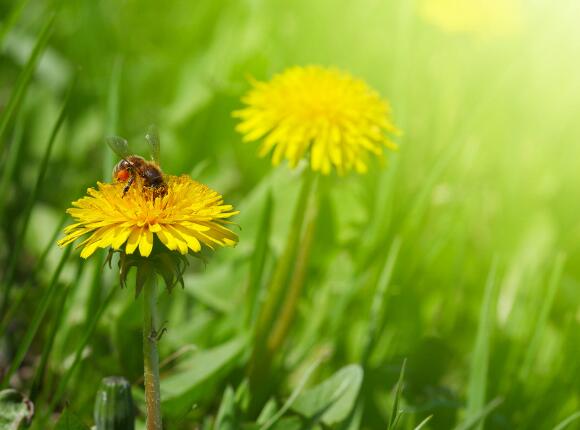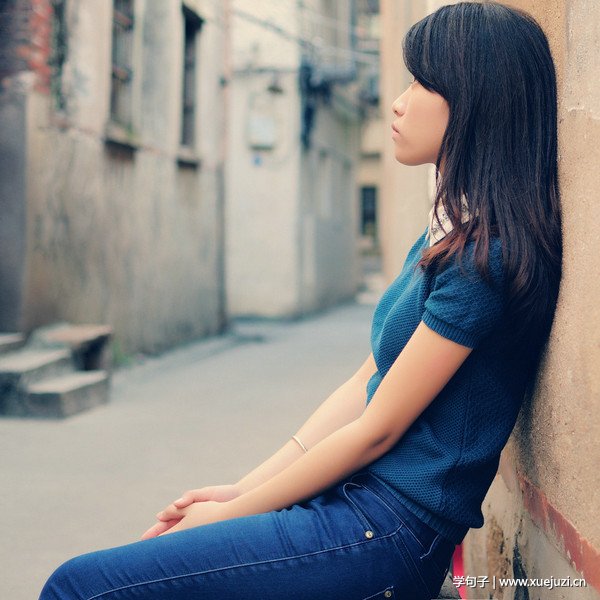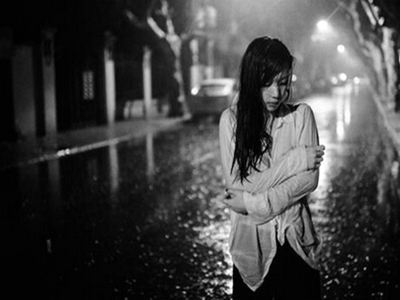
我是学导游的 写个月实习 谁能帮我 整个 天安门 故宫 天坛的导游词 没篇2千字以上 谢谢了
故宫词Lying at the center of Beijing the Forbidden City, called Gu Gong, in Chinese, was the imperial palace during the Ming and Qing dynasties. Now known as the Palace Museum, it is to the north of Tiananmen Square. Rectangular in shape, it is the world‘s largest palace complex and covers 74 hectares. Surrounded by a six meter deep moat and a ten meter high wall are 9,999 buildings. The wall has a gate on each side. Opposite the Tiananmen Gate, to the north is the Gate of Devine Might (Shenwumen), which faces Jingshan Park. The distance between these two gates is 960 meters, while the distance between the gates in the east and west walls is 750 meters. There are unique and delicately structured towers on each of the four corners of the curtain wall. These afford views over both the palace and the city outside. The Forbidden City is divided into two parts. The southern section, or the Outer Court was where the emperor exercised his supreme power over the nation. The northern section, or the Inner Court was where he lived with his royal family. Until 1924 when the last emperor of China was driven from the Inner Court, fourteen emperors of the Ming dynasty and ten emperors of the Qing dynasty had reigned here. Having been the imperial palace for some five centuries, it houses numerous rare treasures and curiosities. Listed by UNESCO as a World Cultural Heritage Site in 1987, the Palace Museum is now one of the most popular tourist attractions world wide.Construction of the palace complex began in 1407, the 5th year of the Yongle reign of the third emperor of the Ming dynasty. It was completed fourteen years later in 1420. It was said that a million workers including one hundred thousand artisans were driven into the long-term hard labor. Stone needed was quarried from Fangshan, a suburb of Beijing. It was said a well was dug every fifty meters along the road in order to pour water onto the road in winter to slide huge stones on ice into the city. Huge amounts of timber and other materials were freighted from faraway provinces. Ancient Chinese people displayed their very considerable skills in building the Forbidden City. Take the grand red city wall for example. It has an 8.6 meters wide base reducing to 6.66 meters wide at the top. The angular shape of the wall totally frustrates attempts to climb it. The bricks were made from white lime and glutinous rice while the cement is made from glutinous rice and egg whites. These incredible materials make the wall extraordinarily strong.Since yellow is the symbol of the royal family, it is the dominant color in the Forbidden City. Roofs are built with yellow glazed tiles; decorations in the palace are painted yellow; even the bricks on the ground are made yellow by a special process. However, there is one exception. Wenyuange, the royal library, has a black roof. The reason is that it was believed black represented water then and could extinguish fire.Nowadays, the Forbidden City, or the Palace Museum is open to tourists from home and abroad. Splendid painted decoration on these royal architectural wonders, the grand and deluxe halls, with their surprisingly magnificent treasures will certainly satisfy modern civilians. Welcome to the temple of Heaven. (After self-introduction) preserved cultural heritages of China. There are basically two kinds of visitors who come here: local pensioners who do exercises here in the morning and evening and sightseers both from home and abroad. All in all ,there are 12 million visitors very year. Now we are going to go along the route that leads to the alter. It will take roughly one hour. Mind you ,the emperor also walked along this route to pay tribute to the God of Heaven. (Along the Southern Sacred Road leading to the Circular Mound Altar) The largest group of architectures ever to be dedicated to Heaven ,the Temple of Heaven served as an exclusive altar for Chinese monarchs during the Ming and Qing dynasties. It was decreed that rulers of successive dynasties would place altars in their own capitals to worship Heaven and pray for good harvest. But why ? The ancient Chinese believed that Heaven was the supreme ruler of the universe and the fate of mankind ,and thus worshiping rites dedicated to Heaven came into being. The Heaven the ancient Chinese referred to was actually the Universe, or nature. In those days, there were specfic rites of worship. This was especially true during the Ming and Qing dynasties when elaborate ceremonies were held. The Temple of Heaven was built in 1420 during the reign of Emperor Youngle of the Ming Dynasty. Situated in the southern part of the city ,this grand set of structures covers an area of 273 hectares. To better symbolize heaven and earth ,the northern part of the Temple is circular while the southern part is square .The whole compound is enclosed by two walls, a square wall outside a round one. The outer area is characterized by suburban scenery, while the inner part is used for sacrifices. The inner enclosure consists of the Hall of Prayer for Good Harvest and the Circular Mound Altar. (Along the Imperial Passage leading from the Southern Lattice Star Gate in front of the Circular Mound Altar) the Circular Mound Altar is enclosed by two walls ,each containing four groups of Southern Lattice Star Gate, each in turn consisting of three doors, with 24 marble doors altogether. Standing on the passage facing north, you will notice that with each pair of doors on is narrower than the other. This reflects the feudal hierarchy: the wider door was reserved for monarchs, while the narrower one was used by courtiers. On the day of the ceremony ,the emperor would don his ritual costume and be ushered in by the official in charge of religious affairs. He ascended the three terraces in the forefront to pay tribute at the alter. (Atop the Circular Mound Alter) we are now on the top terrace of the Altar, or the third terrace .Each terrace has a flight of 9 steps. At the center of this terrace lies a round stone surrounded by 9 steps. At the center of this terrace lies a round stone surrounded by 9 concentric rings of stone. The number of stones in the first ring is 9, in the second ,18, up to 81 in the 9th ring. Even the number of carved balustrades on these terraces is a multiplee of 9. But why? According to ancient Chinese philosophy, yin and yang were two opposing factors. Heaven and the odd numbers belonged to yang while the Earth and even numbers belonged to yin. Nine was the largest heavenly number accessible to man . What is more, the ancient people also believed that heaven consisted of nine layers and that the emperor s abode was on the uppermost tier. Once more look at the round stone in the center. The upper terrace is nine zhang (a Chinese unit of length, one zhang equals 3.3 meters ) in circumference ,while the middle is 15 zhang, the lower, 21 zhang. Classified as yang numbers, the sum of these numerals is 45 zhang which was meant to symbolized success. What is more, by applying the concept of odd numbers and strengthening nine and its multiples, the concept of heaven was thus illustrated and realized . The concept of nine will also be mentioned when we visit some other buildings. Now I will give you a brief account of what happened here annually on the Inter Solstice. The memorial tablet dedicated to Heaven would be set up on the north side of the terrace, while tablets dedicated to the emperor `s ancestors would be enshrined on the flanks. The service would begin around 4 o` clock in the morning. All of the lanterns would be lit .In the foreground, a sacrificial calf is being barbecued. On the square in front of the altar, the emperor, under heavy escort of nearly a thousand courtiers, princes of royal blood ,musicians, dancers and uniformed soldiers, would slowly ascend the altar to offer sacrifice and pray in honor of Heaven. When the service drew to a close ,the sacrifice offered in front of the memorial tablets would be incinerated .All of participants would watch the thick smoke rise upward as if they were seeing God off .Music and dancing would follow .In the end ,the emperor would return to the Forbidden City secure in the belief that he would be blessed and protected by Heaven until the next winter Solstice. It is interesting to note that ,the stone in the very middle of the altar was of major importance ,since it was where the emperor used to stand to say his prayer. The stone ,which is known as the God`s heart Stone, is peculiar in that it is characterized by a specific acoustic phenomenon: it made the emperor` s voice clearer and louder, thus adding to the mystic atmosphere of the service .You can try this out by yourself. (Proceed northward to pass through the Lattice StarGate) (In front of the Gate of glazed tiles) this structure is known as Heaven` s Storehouse. It is entered through the Gate of glazed Tiles. The roofing ,beams, and brackets are all made of glazed tiles or bricks. This is the only structure of its kind in china today . the Heaven` s Storehouse was where memorial tablets dedicated to the gods were kept. Douglas Hurd, a former British foreigh secretary ,once said , “God attends to His affairs on the Cir4cular Mound Altar but stays here. ” Now let` s go in to to see it (Go through the left side door) (In the courtyard of Heaven` s Storehouse) this is the Imperial Vault of Heaven, the main structure of Heaven` s Storehouse. It was built in 1530 and is 17 meters in height and 19 meters in diameter. The structure feature blue roofs topped by a gilded ball ,and carved wooden doors and windows. It is decorated with colored paintings. Founded on a 3-meter-hign round marble terrace ,the building also features a gigantic carved marble ramp laid in the stone staircase leading up to the front entrance.. The ramp is carved in “Two dragons Playing with a pearl ” design in relief. We will enter the main hall by going up the stone staircase on the eastern side. (On the marble terrace of the main hall) the arch of the hall is buttressed by 16 giant pillars on two rings. On top of the pillars there are gilt brackets supporting a circular caisson ,or covered ceiling .The ceiling is characterized by a golden coiling dragon design. The 8 pillar of the inner ring are painted scarlet and decorated with golden lotuses. To the north of the hall there is a marble pedestal. Atop it ,up a wooden flight of 9 steps, is where the major tablet dedicate to Heaven was enshrined. On each flank four tablets are enshrined in honor of the ancestors of the Qing emperors. In the annex hall in hornor of the ancestors of the Qing emperors. In the annex halls in the courtyard, there are tablets dedicated to the deities of the sun, moon ,constellation, cloud ,rain, wind and thunder. (Echo Wall and Triple –sound Stones) Aside from exquisitely laid out architectures, Heaven` s Storehouse is also famous for two structures with peculiar acoustic features, i. E. the Echo Wall and the Triple- Sound Stone. A mere whisper at any point close to the wall can be heard clearly on the other side, although the parties may be 40 or 50 meters apart. This is possible because the wall is round and hermetically constructed with smooth ,solid bricks. In front of the steps leading away from the halls is the Triple Sound Stone. If you stand on the first stone and call out or clap your hands, the sound will echo once; on the second stone, the sound will be heard twice; and on the third stone, the sound will repeat three times. Hence the name. (Go out through the right door and stroll along the circular path northward) (Nine-Dragon Cypress) the Temple of Heaven is also famous for its cypress trees-there are more than 60,000 cypress trees in all ,among which over 4,000 are more than one hundred years old ,adding to the solemn atmosphere of the temple .This tall cypress was planted more than 500 years ago. Its thick branches and twisting trunk resembling nine coiling playful dragons; thus it is known as the Nine-Dragon cypress. It is said that this tree was here to welcome the monarchs. Now it is here to welcome visitor from all over the world. (In the south of Chengzhen Gate) now we are back again on the Central Axis. This brick-arched gate is known as Chengzhen (Adopting Fidelity) .This gate is the northern gate of the Circular Mound Altar and the Hall of Prayer for Good Harvest. The Hall of Prayer for Good Harvest is situated at the extreme end of the axis. It was used by the emperor in the first month of every lunar year for services dedicated to good harvest. (On the Red Stairway Bridge) entering the Hall of Prayer for Good Harvest, we set foot on a raised passage 360 meters long, which the emperor also took to proceed to the hall. This broad north-south walkway, called Danbiqiao (Red Stairway bridge), connects the two sets of main building in the Temple of Heaven and constitutes a single axis. The passage is divided into left, control and right paths by the cross arrangement of slabs. The central and the widest path is known as Heavenly Thoroughfare , which was reserved exclusively for God; nobody, including the emperor, was allowed to set foot onto it . The emperor used the path on the east ,which is known as the Imperial Walk. The ministers and princes used the one on the west .Interesting enough ,there is no walkway left for ordinary people. This is because the Temple of Heaven used to be off-limits to them. Contrary to appearances, this walkway is not a bridge at all . But how so ? This road is 4 meters above the ground and there is a cavern underneath that was reserved for sacrificial oxen and sheep. The cattle were slaughtered at a slaughterhouse about 500 meters away and brought here for sacrifice. All in all ,it can be said this walkway did serve as bridge and can be looked upon as the first cloverleaf in Beijing. Looking back at the thoroughfare, you may realize that this walk is gaining height toward its northern end. As people approach the architectural group of the Hall of Prayer for good Harvest, the flanking groves of cypress recede and perspective widens. Here you are in Heaven. (Costume-Changing Terrace) the marble terrace up ahead is called jufutai, or CostumeChanging Terrace. It is located to the east of the Red Stairway Bridge and covers a space of 25 square meters .IT has marble Slab balustrades. The day before the service ,officials in charge would put up a yellow satin tent on the terrace for the emperor to change out of his yellow dragon robe into blue ceremonial clothes. After the service, the emperor would return to the tentand change back into his imperial robe before returning to the palace. (Proceed to the South Gate of the Hall of Prayer for Good Harvest) (At the Gate of Prayer for Good Harvest) this structure is called the Gate of Pray for Good Harvest. We can catch a slight glimpse of the central building ,the Hall of Prayer
天安门导游词
各位游客们,大家好,欢迎来到,请大家跟这我——导游走。
请大家需注意事项: 请不要随地吐痰,乱丢垃圾,眼看手勿动...... 谢谢合作
请大家跟过来
,位于北京市中心,是明清两朝皇帝的宫殿。
从明朝永乐五年,公元1407年起,集全国匠师,征用二、三十万民工、军工,经过14年的时间,建成了这组东方最大的宫殿群。
故宫规模巨大,总面积72万平方米,共有大小房屋9999间,先后有27位皇帝住在这里。
游客们,看,故宫南边的第一道门就是闻名遐迩的天安门。
朱红的墙面,同样鲜红的琉璃瓦双层屋顶,还有墙下的五扇拱形门以及墙上那的头像,构成了天安门的大概外貌。
这里不仅是故宫的南大门,还是仪式的举行地。
大家来到这里因为感到非常的兴奋和无比的自豪吧
游客们,我们现在过了天安门,大家远远可以望见一条大河,一条幽清的河,它弯弯曲,一眼望不到头,犹如一条很长的青丝带。
这条河叫金水河,是人工开凿的,据说是为了防御进攻的敌人,类似于一座城的护城河。
金水河上有五座用大理石砌成的桥,叫五龙桥。
踏着桥面的条砖,扶着桥边的栏杆,似乎能感觉到那时的时代气息。
大家好好来欣赏欣赏吧
请大家跟着我
哦,到了
我们现在过了金水河、五龙桥,通过了太和门,我们来到了皇帝讨论国家大事,召见群臣的太和殿
大家来看看我们眼前的太和殿,太和殿有两层顶,都是用黄色的琉璃瓦铺好的,在阳光的照耀下闪闪发光,美丽极了
大家再看看屋檐下,有十几根红柱支撑,再往下就上一个高大洁白的汉白玉台基。
太和殿进深37.2米,宽63.9米,高26.9米,汉白玉台基高8.1米。
请大家看看我现在手指的地方,看看,在殿前开阔的台基上,依次整齐地陈列着日晷、嘉量、铜龟、铜鹤等。
大殿正上方,有一块金边蓝匾,上书太和殿三个金光闪闪、的大字。
殿内排有18根金柱,每一根金柱上都雕有千姿百态、栩栩如生、活灵活现的金龙,那架势,似乎要一跃而起,飞向苍穹。
还有那闪着光彩夺目的龙椅。
太和殿后面,还有皇帝上朝前休息的中和殿与举行最高级别的保和殿。
我们过了乾清门,来到了内廷,就是宫人们的生活区。
主要有皇帝住的乾清宫,皇后住的坤宁宫,太上皇住的宁寿宫、皇太后住的慈宁宫以及妃嫔们住的东六宫与西六宫等等。
我们现在再往后走,就来到了故宫最北的地方,叫御花园,园中有钦安殿。
这里有苍松翠柏,名花异卉,怪石伏立、泉水喷珠,是故宫内最亲切自然之处。
看,我们的美丽和宏伟已经大大收在我们的记忆里,相信走完了故宫的游客们,你们已经很累了,大家可以回旅店休息了,我再次祝你们愉快、健康
今天的行程到此结束,希望大家常来这里哦
天安门导游词
你可以去北京的图书城买一本北京的景点导游词
故宫的导游词
最佳答案故宫导游词各位来自世界各地的游客们,你们好
欢迎来到“世界遗产”之北京故宫,我是来自__的_导游,下面我就带大家去细细游赏一番吧。
中国明清两代的皇宫,又称紫禁城,地点位于北京城中心。
开始建造与明永乐四年至十八年,也就是现在说的1406年至1420年,后来经过多个朝代的劳动人民细心修改,变的非常的富丽堂皇,但仍保持着原来的布局和规模,,是世界上保存的最完整、规模最大的古代木构架宫殿建筑群。
最先的设计人是蔡信、阮安等,主持施工的人是蒯详、陆详等,名字里都有详哦
我们说完了北京故宫的历史和人物建造,现在该说说外观和排列顺序了吧
这座城设四个门,南门正中面是午门、北边是神武门、东为东华门,西为西华门,四门个建有重檐庑殿顶门楼。
这座城的四个角都还布有一些结构精巧、外观秀丽的角楼。
外面的墙有10米多高呢
还有护城河宽52米,够宽的吧
长3800米,整个建筑群按南北中间的中轴线为对称布局,层次分明,主次有序。
听完了一以上那些,你应该对北京故宫有些了解了吧
可能你还不知道把,连皇帝的住所都是那么井井有条
前三殿是全宫最大的建筑群,占地面积有达8.5万平方米,是宫城的12%,后三供则为前三殿的25%,期于宫殿依次递减,主要突出前三殿、后三宫的主要地位。
1961年定位中国第一批全国重点文物保护单位,已被联合过教科文组织列为世界文化遗产。
关于北京故宫的导游词(100字左右)
故宫导游词: 各位来自世界各地的游客们,你们好
欢迎来到“世界遗产”之北京故宫,我是来自__的_导游,下面我就带大家去细细游赏一番吧。
中国明清两代的皇宫,又称紫禁城,地点位于北京城中心。
开始建造与明永乐四年至十八年,也就是现在说的1406年至1420年,后来经过多个朝代的劳动人民细心修改,变的非常的富丽堂皇,但仍保持着原来的布局和规模,,是世界上保存的最完整、规模最大的古代木构架宫殿建筑群。
最先的设计人是蔡信、阮安等,主持施工的人是蒯详、陆详等,名字里都有详哦
我们说完了北京故宫的历史和人物建造,现在该说说外观和排列顺序了吧
这座城设四个门,南门正中面是午门、北边是神武门、东为东华门,西为西华门,四门个建有重檐庑殿顶门楼。
这座城的四个角都还布有一些结构精巧、外观秀丽的角楼。
外面的墙有10米多高呢
还有护城河宽52米,够宽的吧
长3800米,整个建筑群按南北中间的中轴线为对称布局,层次分明,主次有序。
听完了一以上那些,你应该对北京故宫有些了解了吧
可能你还不知道把,连皇帝的住所都是那么井井有条
前三殿是全宫最大的建筑群,占地面积有达8.5万平方米,是宫城的12%,后三供则为前三殿的25%,期于宫殿依次递减,主要突出前三殿、后三宫的主要地位。
1961年定位中国第一批全国重点文物保护单位,已被联合过教科文组织列为世界文化遗产。



